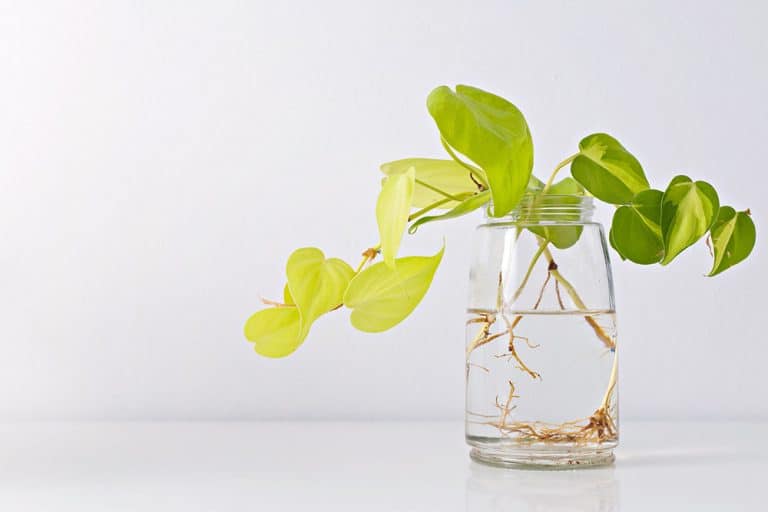How To Harvest Cilantro Without Killing The Plant?[The Best Way!]
Did your cilantro leaves stop growing after the first harvest? Don’t despair, I’m here to share with you how to harvest cilantro without killing the plant.
Why is this herb so delicate to harvest? Is it because of how it was grown? Partly yes, but mostly it is the way you pick them. Well, before I go into the conditions best to grow cilantro it is good to know more about cilantro.
It’s the leaves of the coriander plant, which is its common name.
Coriander seeds are also commonly used as a spice.
Many people often confuse the two because the names are loosely used interchangeably.
Cilantro has an earthy floral aroma and fresh citrusy flavor with a hint of peppery note towards the end. Therefore, it is definitely an acquired taste. You either love it or hate it!
Did you know for some people it tastes like soap?
A wild fun fact.
Thankfully, it is not for me. I personally love the taste and growing it has been a joy to my cooking!
It is very popular in Thai or Mexican cuisines.
They are great for salsa or as a garnish in salads. It has been a staple in my Taco Tuesdays and Tom-Yam soup.
Full disclosure, harvesting cilantro the first time was a disaster for me. My cilantro died and didn’t grow back.
I was definitely sad because all my research showed how easy to grow and pick them.
However, through more research and tries, now I know how to harvest cilantro without killing the plant.
Thus, I want to share with you an easy-to-follow step-by-step process. Additionally, I have also included many planting tips to ensure your cilantro keeps growing.
Now let’s help you to tackle this problem!
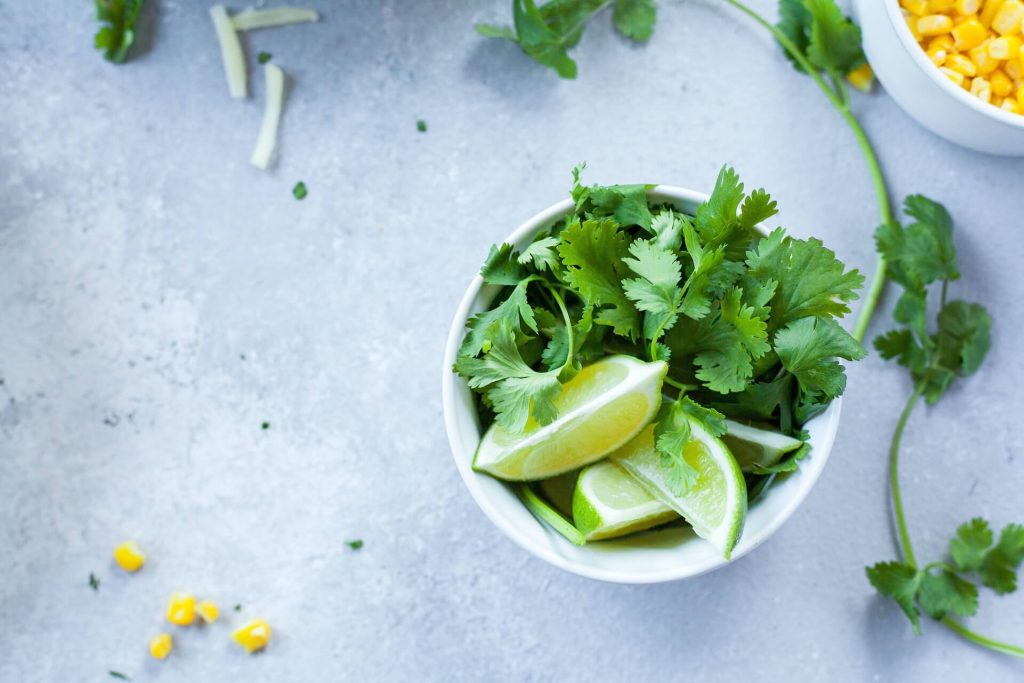
How To Harvest Cilantro Without Killing The Plant: A Quick Guide
Ways To Harvest Cilantro Without Killing The Plant?
1. Use sharp and clean scissors.
2. Select the biggest outer leaves.
3. Prune only the top third of the stems.
4. Do not harvest more than ⅓ of the plant.
Affiliate Link Disclosure
This post may contain affiliate links, meaning I get a commission if you decide to make a purchase through my links, at no extra cost to you.
Related Posts
- How To Grow Herbs Indoors (And Save Money)
- 17 Best Frugal Recipes
- How To Harvest Rosemary [The Right Way]
- How To Harvest Basil Seeds – The Right Way!
How To Harvest Cilantro Without Killing The Plant?
Here are 4 easy-to-follow steps on how to pick cilantro without killing the plant;
1. Use Sharp And Clean Scissors
This first tip is to use sharp and clean scissors because it is precise and not prone to tugging the cilantro’s leaves. If you have short nails, it might lead to accidentally uprooting the whole plant while pinching the leaves.
Also, this next tip will be so easy when you have the right tool because it requires precision when cutting.
2. Select The Biggest Outer Leaves
The way to harvest cilantro without killing the plant is by selecting the largest outer leaves. This is because they are the oldest and longest which is perfect for harvesting without accidentally cutting too much.
Also, it will be the first to bolt when it is time.

3. Prune Only The Top Third Of The Stems
Then carefully, cut only the top third of the stems or an inch from the soil to allow new stems and leaves to grow.
4. Do Not Harvest More than ⅓ of the Plant
Ensuring that you never cut too much or more than ⅓ of the plant, will keep your cilantro growing. This is called the cut-and-come-again method.
Easy right? With practice, it will be! I recommend harvesting a few stems first before harvesting them in larger quantities.
I am using this ergonomic Vivosun Gardening Scissor because it helps with my wrist issues and provides a more comfortable grip.
How Do You Know When Cilantro Is Ready To Be Picked?
Cilantro’s growing period is only 4 weeks from the initial seeds. Harvesting cilantro at this maturity stage is the right time. Once the stem height reached around 6 to 8 inches, cilantro is ready for the first harvest!
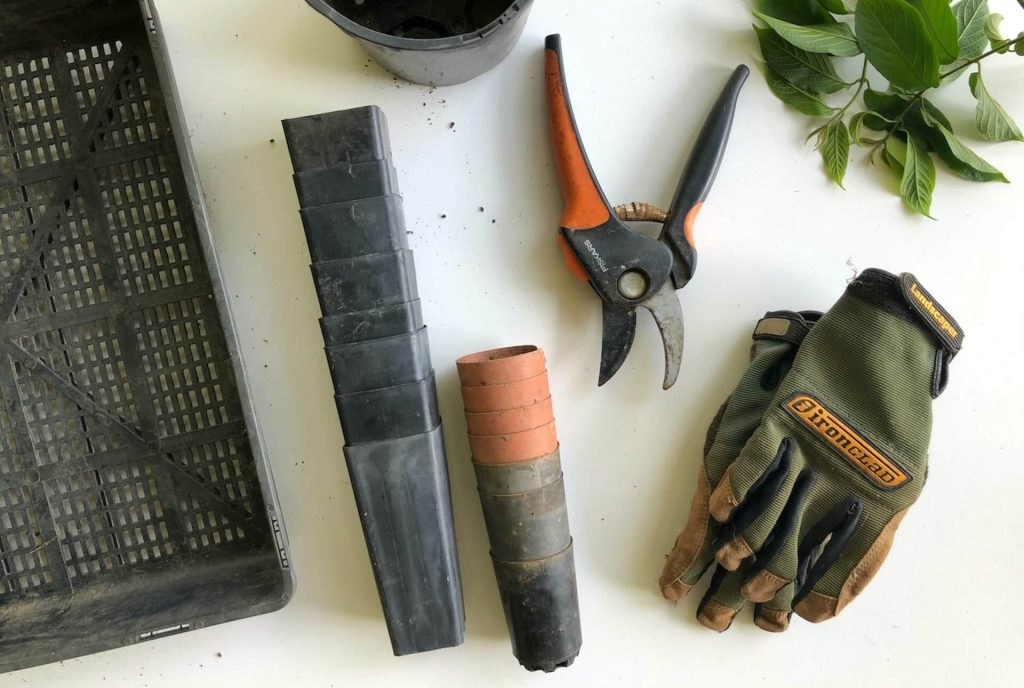
How Do You Harvest Cilantro So That It Keeps Growing?
Are you wondering: will cilantro grow back after cutting? Of course!
The way of harvesting and time to harvest are two important factors to a successful and continuous harvest. Here are ways how to harvest cilantro so it keeps growing.
1. Harvesting Cilantro Early And Frequent
Cilantro is a fast-growing plant. It is vital to keep a close eye on it from week 5 onwards and don’t delay the first harvest. You can enjoy multiple harvests throughout spring until early summer.
I recommend the cut-and-come-again method. This method has proven to allow fast continuous cilantro production. Now that you know how to prune cilantro correctly, you will not kill the plant. Thus, be prepared for frequent harvest.
2. Practice Succession Planting
Succession planting is about timing with the objective of continuously producing new cilantro stems throughout the season. To do this, you sow the coriander seeds every two weeks in the first month.
They will have different bolting times, which allows you to harvest in stages. Also, it serves as a backup should the first sow bolt too early or you accidentally prune the stems too much. This method is very suitable for places with a warmer climate.

How Many Times Can Cilantro Be Harvested?
Cilantro takes roughly 4 months until it reaches the bolting stage. Throughout this time, when cilantro is picked correctly, you can enjoy multiple frequent harvests. I recommend planting cilantro in early spring if you wish to enjoy a bountiful harvest.
Another reason is to prevent early flowering and seeding caused by heat during summer. This is also known as bolting. Cilantro goes into survival mode to produce seeds when exposed to high temperatures.
Is It Possible To Harvest Cilantro After It Bolts?
Can you harvest cilantro after it flowers? Unfortunately no. This is because when it starts to bolt, cilantro is no longer edible as the taste changes to bitter.
If you’re questioning: why is my cilantro flowering? Rest assured that bolting is a natural occurrence and a sign that cilantro has reached the end of its life cycle. If you have faced this as a first-time cilantro grower, welcome to the club!
As part of the cilantro plant stages, you can confirm bolting has started when your cilantro grows more than 2 feet in height and its stems are thick while tiny white flowers grow at the tip. If not picked, it will produce coriander seeds.
This may not be the outcome you want. However, all is not lost. You can use coriander seeds for succession planting or in cooking as meat seasoning after you ground them.
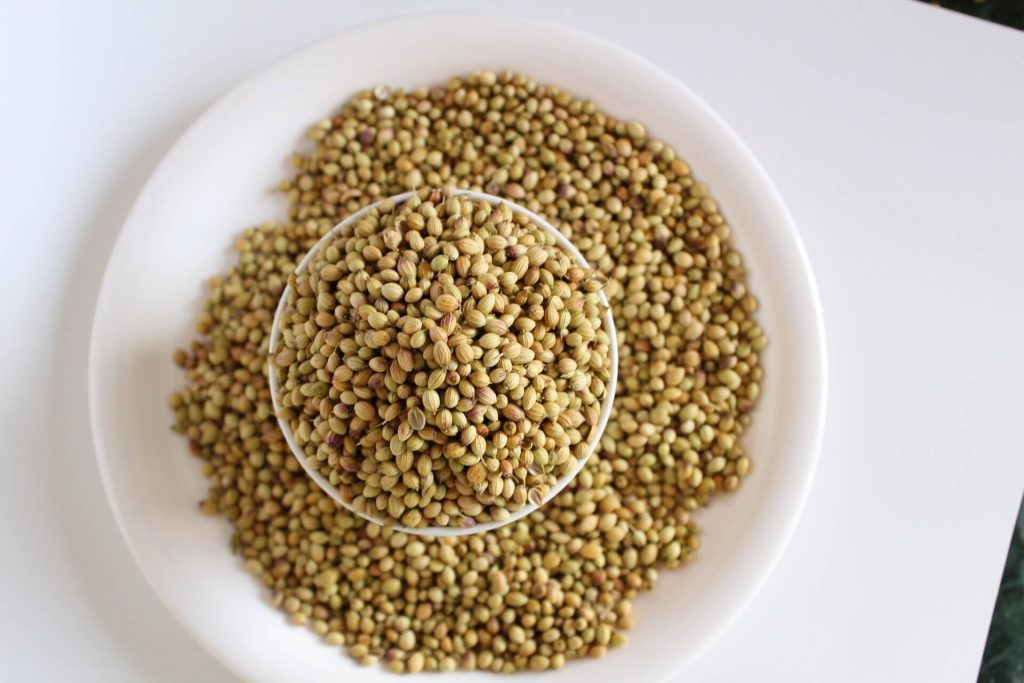
How Do You Stop Bolting?
Can you stop cilantro from bolting? No, you can’t because it’s part of the cilantro plant stages. However, here are my tips that you can consider to prevent early bolting and enjoy multiple harvests.
1. Plant Cilantro Early
Plant your cilantro at the beginning of spring. The cooler weather and shorter days will not accelerate bolting due to the lack of heat. You can even consider indoor planting 4 weeks before the last frost date for an early start.
I advise planting indoors to protect cilantro from frost. By the time it is no longer a threat you can take it outdoors and your cilantro is ready for the first harvest.
2. Add Mulch To The Soil
Introduce mulch onto the cilantro’s soil. Mulch helps to lock the moisture in the soil and maintain a cool temperature for the roots. These two soil conditions are important to support cilantro’s growth and slow down bolting. Especially when the temperature starts to rise.
3. Choose Slow-Bolt Cilantro
Did you know there are different types of cilantro? You can consider slow-bolt cilantro like Santos or Slot-Blot. This will help if you live in a higher-temperature climate because it slows down the bolting period.
There is a huge variety of cilantro such as:
- Terra, Caribbean
- Long-Standing
- Costa Rica
- Lemon
- Leisure
- Delfino
- Slot-Blot
- Jantar
- Santos
- Moroccan
While you are browsing to purchase, look for “heat-tolerant”, “long-standing” or “bolt-resistant” in the description. I’ve planted different varieties and tracked their growth to determine which grows well with my weather.
A good example is the Seeds of Change Cilantro Slow Bolt seeds.
How To Store Harvested Cilantro So It Remains Fresh?
If you are successfully harvesting cilantro without killing the plant after trying the steps. You might end up with an abundance of fresh cilantro that you want to keep fresh.
After harvesting cilantro, place the bottom of the stems into a jar or glass filled partially with water. It is best to store them in the refrigerator because cilantro stays fresh longer at a cooler temperature.
Before storing them, cover loosely the jar or glass of cilantro with a plastic bag. This way, the cilantro can last up to 2 weeks or longer. If the water starts to discolor after a few days, it is an indicator to change it.
How To Store Cilantro Long-Term?
Something I have learned from a cooking show is to wash and dry the cilantro leaves thoroughly after harvesting. Then, chop them up and place them inside ice cube trays along with some water and oil ready for freezing.
After frozen, just transfer them into a bag and store them in the freezer. Such a convenient way to add to soups, sauces, and marinades when needed.

What Are The Best Conditions To Grow Cilantro?
If you are struggling to grow cilantro for the first harvest, below are some helpful tips to achieve the best conditions to grow cilantro.
1. Temperature
Cilantro is a cool-weather plant. It thrives in temperatures between 60 to 70 degrees Fahrenheit. Perfect for spring and fall planting.
2. Watering
Cilantro doesn’t require so much water but the soil needs to have enough moisture. A rule of thumb that I practice is watering 1 inch of water once a week.
3. Soil
Cilantro’s soil needs to have good drainage, loose, and moisture pH levels of 6.2 to 6.8 for it to grow. I will stop raving about this Kensizer Soil Moisture/pH Meter because it has saved me from overwatering my plants.
4. Sun Exposure
Cilantro needs roughly 6 hours of shaded sunlight. Too harsh afternoon sunlight and heat will cause it to bolt early.
5. Spacing
Cilantro seeds are best to be planted ¼ to ½ inch deep and 1 to 2 inches apart. This is to allow good airflow between the stems.
6. Companion Planting
Cilantro is a super-compatible companion plant because it helps to deter pests due to its smell. It can easily be tucked near tomato, spinach, or kale.
FAQs On How Do You Harvest Cilantro Without Killing The Plant?
Will Cilantro Grow Back After Cutting?
If you are thinking, will cilantro grow back after cutting? Yes of course! The way of harvesting and time to harvest are two important factors to a successful and continuous harvest. I recommend the cut-and-come-again method.
This method has proven to allow fast continuous cilantro production. Granted that you know how to prune cilantro correctly. Thus, be prepared for frequent harvest to ensure regrowing of cilantro stems.
What Part Of The Cilantro Plant Do You Eat?
The most common part of cilantro to eat is the leaves. However, the whole cilantro plant is edible like the stems. The stems are commonly used in Thai cuisines because it has a strong flavor suitable for curry pastes and soups.

How Do You Harvest Cilantro Without Killing The Plant?
So, how do you harvest cilantro without killing the plant? Start with sharp and clean scissors. Then prune with precision ensuring that you never cut too much or more than ⅓ of the plant for it to grow new stems and leaves. This is called the cut-and-come-again method.
While reading this article, you should have identified what you did wrongly.
This is what I call a light bulb moment of understanding how to pick cilantro without killing the plant. Wonderful!
Just follow the 4 easy steps I shared above on how to harvest cilantro without killing the plant and you will be a seasoned cilantro harvester. In time, no cilantro will be left unpicked or accidentally killed.
The journey of growing certainly has many learning curves depending on the type of plant. All of us go through it.
Don’t let it stop you from learning from the mistakes because once you learn and take action to correct them, the successful outcome is so rewarding.
In this case, harvesting bountiful lush aromatic cilantro!
Now go on and make some delicious salsa and guacamole for your Taco Tuesday with this herb.
Related Posts




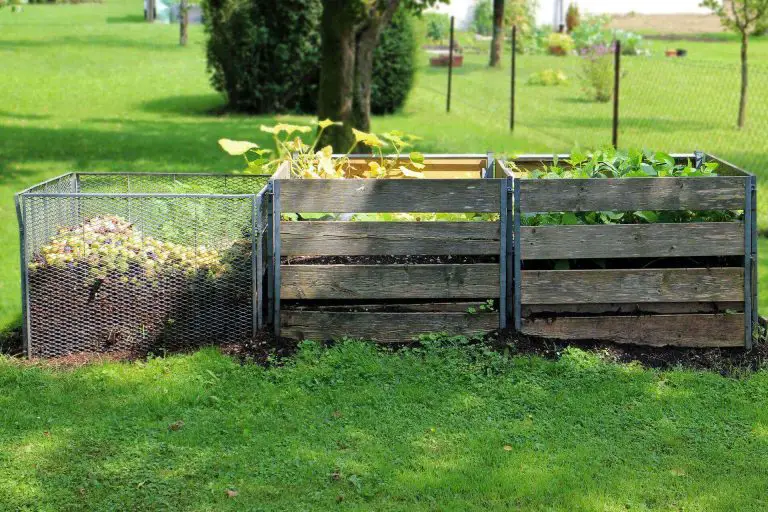

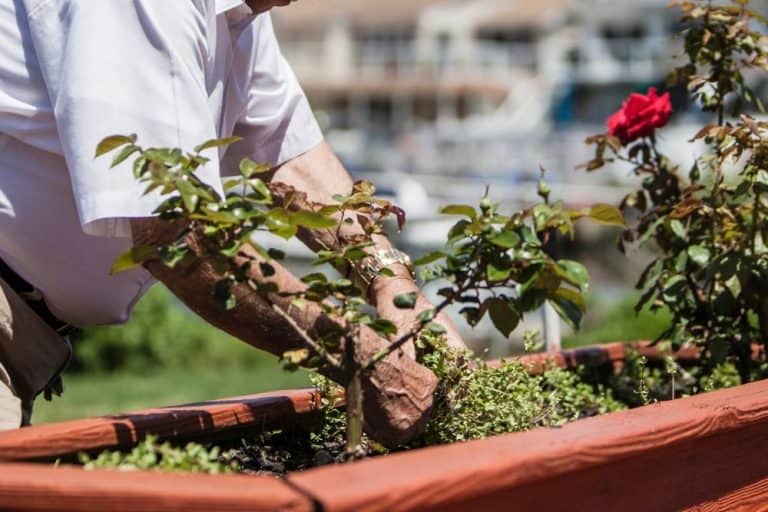
![23 Companion Plants For Thyme To Help It THRIVE! [2023]](https://aboveandbeyondgardening.com/wp-content/uploads/2022/10/companion-plants-for-thyme-16-768x512.jpg)

